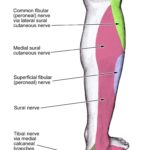
Depleting levels of Vitamin D

Soak up the sun: The problem with depleting levels of Vitamin D. Just when we thought we had it all figured out with the slipping, slopping and slapping. The latest buzz in the Aussie Health world is a rising concern for the lack of Vitamin D in our systems.
It appears that a staggering 58% of Aussies are suffering fm Hypovitaminosis D, a.k.a, a vitamin D deficiency (Boyages & Billinski, 2012). Vitamin D can either be ingested or readily obtained by exposure to sunlight. This begs the question, what are we in sunny Australia doing wrong?
WHAT IS VITAMIN D?
To best understand why sufficient levels of Vitamin D are necessary, we need to be know what it is first. It appears that Vitamin D is a group of fat soluble secosteroids (similar to steroids with a different molecular structure) with Vitamin D2 and D3 being the most essential for the human body. The other forms of the Vitamin are frequently converted to type 2 or 3 for use in the body.
The well-known primary function of the vitamin is to assist the absorption of calcium and phosphate in the intestine, which in turn improves bone health. The vitamin does not exist in its most useful form naturally.
Vit D2 is ingested in the diet and Vit D3 is derived from a type of cholesterol that is present in the body. The latter can only take place in adequate exposure to sunlight. The unfortunate reality is that a natural diet alone is insufficient to produce adequate levels of Vitamin D in the body. This explains the need for vitamin D fortified foods on the market. With adequate exposure to sunlight however, dietary supplementation is unnecessary. Question is, how much is adequate?
HOW MUCH VITAMIN D IS ADEQUATE?
The amount of sunlight required for the synthesis of vitamin D varies depending on the UV index of the area that you live in. For summer in Queensland, one may only require a few minutes of exposure to mid-morning or afternoon sunlight to reach adequate levels. However those in southern parts of Australia where the UV index is lower, people may require up to 2-3 hours of sun exposure.
Various resources recommend various levels of exposure. However the general consensus is that you gradually increase your levels of exposure to sunlight till the required daily exposure is reached.
The use of sunscreen with SPF protection blocks out UVB radiation that is required for the synthesis of Vit D. However, the use of sun protection is still advised at all times when one isn’t replenishing their vitamin levels.
POPULATIONS AT RISK OF DEFICIENCY OF VITAMIN D
It is important to recognise when you may have low levels of Vitamin D. At risk populations include:
- Naturally dark skinned individuals ( as they have increased levels of the pigment that blocks Vitamin D).
- People who cover their skin for cultural or religious beliefs.
- Individuals who work long hours indoors: healthcare shift workers, aged care workers etc.
- People with oseteoporosis
- The elderly
- Babies and children of mothers with vitamin D deficiency.
WHAT CONDITIONS YOU ARE AT RISK OF WITH A VITAMIN D DEFICIENCY?
- Hypertension
- Type I diabetes (Chiu et.al, 2004)
- Cardiovascular conditions (Anderson et.al, 2010)
- Osteomalacia and rickets.
Recent literature has suggested that a deficiency in Vitamin D leads to hypophosphatemia (or a lack of phosphate absorption due to decreased vitamin D levels). This therefore has resulted in muscle weakness (Schubert & DeLuca, 2010). With so many possible ailments caused by a lack of vitamin D, it is no wonder that several people have turned to supplements. However, it is important to consult your doctor prior to taking such oral supplements, due to the possibility of Vitamin D toxicity.
This is a rare condition and cannot occur purely through exposure to sunlight. The toxic dose may vary for individuals and symptoms can include nausea, vomiting, abdominal cramps, poor appetite and frequent urination. It is advised that one seeks immediate medical help if such symptoms are noticed after supplementation.
SUMMARY
We are fortunate enough to be graced by the scorching rays of the sun here in Queensland. As much as we might like to turn down the heat, it’s probably best that we take a few minutes out of the day to soak up some of that nutritious sunshine! Soak it up Australia!
If you are experiencing a side effect of a Vitamin D deficiency come and see a physical therapist at our physio Brisbane clinic to get you back on track. Book an appointment online or speak to our friendly team on 07 3352 5116.







